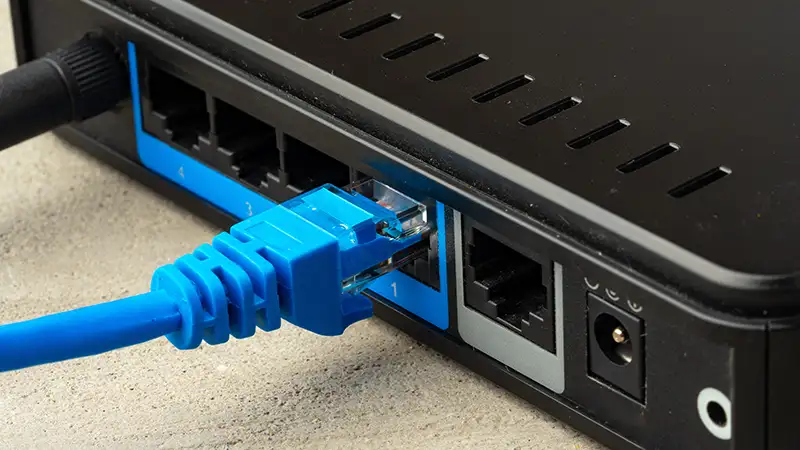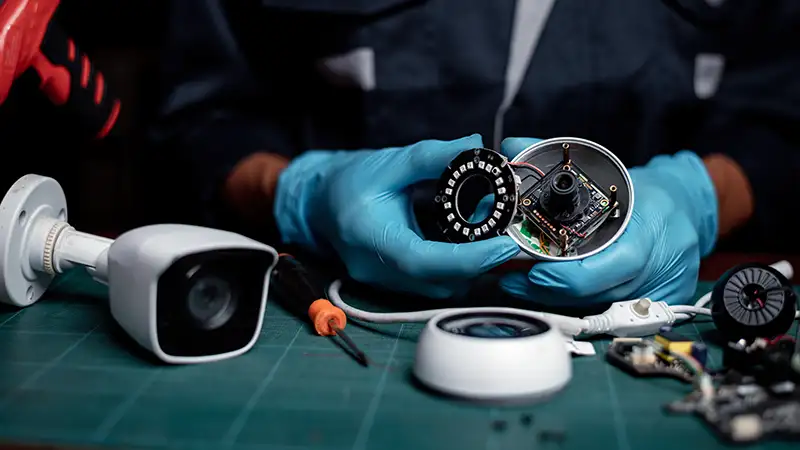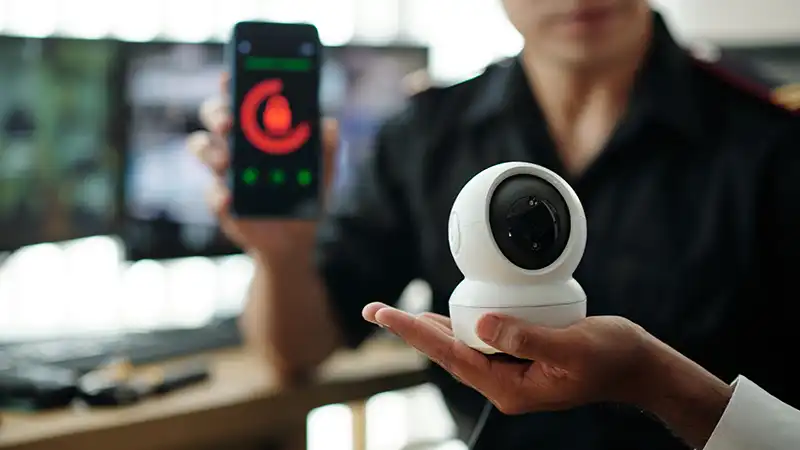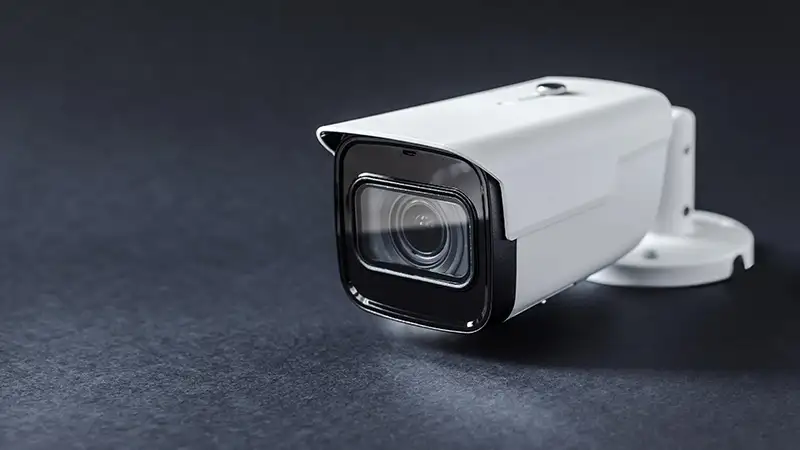
- May 14 2025
- |
- Reading Time: 4 Min
What Is Power over Ethernet and How Does It Work?
Reading Time: 4 minutesRunning separate power and data cables to every device used to be the only way to get things working. But today, there’s a smarter solution: Power over Ethernet (PoE).
With PoE, a single cable does two jobs. It delivers both the data your devices need to communicate and the electrical power they need to run. That means fewer cables, easier installation, and, often, lower costs.
If you’ve ever thought, “There has to be a simpler way to set up cameras, phones, or Wi-Fi access points,” this is it.
But while the idea sounds simple, many people have questions:
-
- What exactly is PoE?
- Is it powerful and reliable enough?
- Which devices can use it?
- Will it work with my existing setup?
This article will answer those questions in plain language. We’ll also explain why PoE can save time and money, both today and as your network grows in the future.
If you’re thinking about upgrading or expanding your systems, here’s what you need to know.
What Is Power over Ethernet?
Power over Ethernet (PoE) is a technology that lets a single Ethernet cable carry both data and electrical power to a device.
In a traditional setup, devices like cameras or wireless access points need two connections:
-
- A network cable to send and receive data.
- A separate power cable plugged into an electrical outlet.
With PoE, you only need the network cable. This cable connects to a PoE-enabled switch or a PoE injector, which sends both power and data to the device.
Devices that can use PoE are called Powered Devices (PDs). Common examples include:
-
- Security cameras
- Wi-Fi access points
- VoIP phones
- Digital signage
- Some AV equipment and controllers
This simple change (combining power and data into one cable) can make a big difference in how easy and affordable it is to install and manage your technology.
No need to run power cables through walls or ceilings. No need to hire electricians for every device. Just plug in the Ethernet cable, and you’re ready to go.
How Does PoE Work?
Power over Ethernet works by sending electrical power along the same cables that carry your data. This might sound complicated, but the technology behind it is simple and safe.
Here’s how it works:
-
- Your Ethernet cable contains four twisted pairs of wires. In a PoE setup, some of these wires carry data while others carry power. In newer systems, all the wires can carry both at the same time.
- The power comes from either a PoE-enabled network switch or a PoE injector. These devices send low-voltage electricity (usually 48 volts) down the Ethernet cable.
- The device receiving the power, called a Powered Device (PD), must be PoE-compatible. Many modern devices already are. For older devices, special adapters called PoE splitters can sometimes be used.
One common worry is whether power and data sharing the same cable will slow down the network. It won’t. Power and data travel in separate frequencies or wire pairs, so they don’t interfere with each other.
Another concern is safety. Because PoE uses low voltage, it’s much safer than running high-voltage power cables, and it follows strict industry standards to prevent overloading or damaging devices.
Why Use PoE?
For many IT directors and facilities managers, PoE makes complex installations simpler and often less expensive.
Here’s why it’s becoming the preferred choice for powering devices:
1. Simplified Installation
Instead of running both a power cable and a data cable to every device, you only need a single Ethernet cable.
-
- Fewer cables means less clutter.
- Less labor means faster installations.
- No need for an electrician at every device location.
2. Lower Costs
PoE reduces both material and labor costs. With fewer cables to buy and fewer contractors to hire, the savings can add up quickly, especially in larger spaces with multiple devices.
3. Flexibility and Scalability
When devices need to be moved, replaced, or upgraded, it’s much easier with PoE. You only need to manage the Ethernet connection. No rewiring for power.
4. Safety and Reliability
PoE uses low-voltage power. This reduces the risk of electrical hazards and makes it easier to add backup power systems (so devices like security cameras or phones stay online during outages).
At Carolina Georgia Sound (CGS), we design PoE systems that balance cost, performance, and long-term flexibility. Whether you’re adding a few devices or planning a full building network, we can help you choose the right approach from the start.
Frequently Asked Questions About PoE
Even though Power over Ethernet (PoE) is widely used, it’s natural to have a few questions before using it in your own space. Here are the most common ones we hear:
Will my devices work with PoE?
Many modern devices, including phones, cameras, and Wi-Fi access points, are already PoE-compatible. For devices that aren’t, you can often use a PoE splitter, which separates the power and data signals so the device can still work.
Is PoE powerful enough for bigger devices?
Yes, especially with newer PoE standards.
-
- PoE provides up to 15.4 watts per port.
- PoE+ provides up to 30 watts.
- PoE++ can provide up to 100 watts—enough for high-demand devices like PTZ cameras and some AV equipment.
Will PoE slow down my network?
No. Power and data use separate wires or frequencies inside the cable. They won’t interfere with each other or reduce your network speed.
Is PoE safe?
Yes. PoE systems follow strict IEEE standards and use safe, low-voltage power levels. The system is also designed to prevent overloading or damaging connected devices.
Why Work With CGS?
Power over Ethernet can simplify your installations, but only if it’s designed and installed the right way.
At Carolina Georgia Sound (CGS), we do more than just supply equipment. We also take the time to:
-
- Assess your space and goals so you don’t overspend or underbuild.
- Recommend the right PoE solution: One that balances performance, budget, and future growth.
- Handle design, installation, and testing, so everything works smoothly from day one.
- Plan for flexibility, so adding or upgrading devices later is simple and affordable.
Whether you’re upgrading a single room or planning a larger rollout, CGS makes complex technology easy to use and easy to maintain.
Ready to simplify your next AV or networking project?
Book a free consultation with us today, and we will assess your needs and recommend the most cost-effective setup that meets your current and future goals.
Recent Success Stories





![]()
Great team, excellent service. We highly recommend!
Georgetown Villas Llc.
Owner,
![]()
We’ve been enjoying the music of Carolina Georgia Sound here at Roundabouts for 10+ years now. They offer a wide variety of music from all genres at an affordable price. Customer service is very helpful and responsive.
Roundabouts Consignments.
Owner,
![]()
Very fast, considerate, respectful, knowledgeable, not to mention helpful. I would recommend them to everyone! I will continue to use them!!!!!







